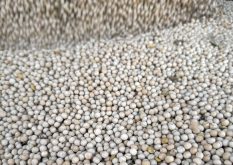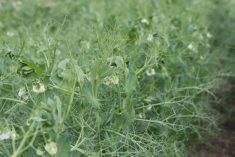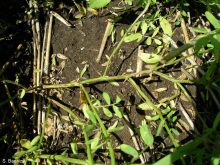The country farmers have produced large harvests over the last two years and are Canada’s main competitors for the crop
SASKATOON — Canada’s top competitor in the red lentil export market is experiencing problems.
AgPulse Analytica is reporting that the crop is in trouble in two key states of Australia — South Australia and Victoria.
Primary Industries and Regions South Australia (PIRSA) estimates farmers in that state will harvest 428,000 tonnes of the crop.
Read Also

Crop quality looks good this year across Prairies
Crop quality looks real good this year, with the exception of durum.
That is half of the 860,000 tonnes that the Australian Bureau of Agricultural and Resource Economics and Sciences (ABARES) is forecasting.
AgPulse analyst Gaurav Jain noted in a recent article he wrote for the Global Pulse Confederation’s (GPC’s) website that there is a longstanding pattern of PIRSA’s estimates being well below ABARES.
He appears to be siding with PIRSA’s forecast.
“The extremely poor soil moisture profile across cropping regions in South Australia this season has indeed created significant challenges for agriculture,” he stated in the GPC article.
“This issue is compounded by similar differences in Victoria, especially in the Wimmera region, which is another major area for lentil production.”
As a result, AgPulse is forecasting 1.17 million tonnes of lentil production in Australia, which is well below the ABARES forecast of 1.69 million tonnes.
If AgPulse is correct, it would represent a big drop from the previous two bin-busting crops of 1.57 and 1.69 million tonnes.
The AgPulse estimate is in line with one offered up by Mostyn Gregg, vice-president of grains and pulses with Olam, during a GPC webinar in late-September.
He is forecasting one to 1.2 million tonnes of Australian red lentil production.
“It’s going to be difficult to pull those lentils our of a disengaged grower’s hands,” said Gregg.
The other market that needs to be watched is India, the world’s biggest importer of the crop.
The big story there is that the National Agricultural Cooperative Marketing Federation of India Ltd. (NAFED) is sitting on a massive stockpile of 800,000 tonnes of lentils.
“Some tonnes will need to be flushed,” Binod Agarwal, managing partner of SGR Agri, said in a recent email.
The country typically imports about 1.4 million tonnes of red lentils annually. He believes that volume will drop to 800,000 tonnes if the government releases its stocks.
The other bearish factor in India is the strong performance of the Southwest Monsoon. Cumulative rainfall for the June 1 through Sept. 30 period was 7.6 per cent above the 50-year average.
India’s summer (kharif) season is coming to an end. Pigeon pea yields are expected to be higher than usual, and more acres were planted than normal.
Chuck Penner, analyst with LeftField Commodity Research, said that will limit Indian demand for Canadian green lentils, which are used as a substitute for pigeon peas when India has a poor crop.
“Fortunately, there’s been strong demand for Canadian green lentils from countries other than India this year, and the impact will be limited,” he said in a recent article he wrote for Alberta Pulse Growers.
The strong monsoon rains also bode well for the country’s upcoming winter (rabi) season crops, which include red lentils, peas and chickpeas.
“The summer monsoons have set the stage for good crop establishment,” said Penner.
The Government of India has increased the minimum support price (MSP) for several pulses, including red lentils. The new MSP is above the market price, which could encourage increased acres of the crop.
“It’s still too early to make any serious production forecasts, but another large red lentil crop in India could blunt demand for Canadian lentils export prospects a few months into 2025,” Penner stated in the Alberta Pulse Growers article.
He also noted that Indian prices for both desi chickpeas and yellow peas have been falling, a sign that supplies of the two crops are becoming comfortable.
Australia is harvesting a large crop of desi chickpeas, and there are reports that Indian farmers will boost acres as well, said Penner.
Yellow peas are used as a substitute for desi chickpeas, which means India may not extend its import duty exemption for yellow peas past the current Dec. 31 deadline.


















